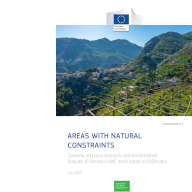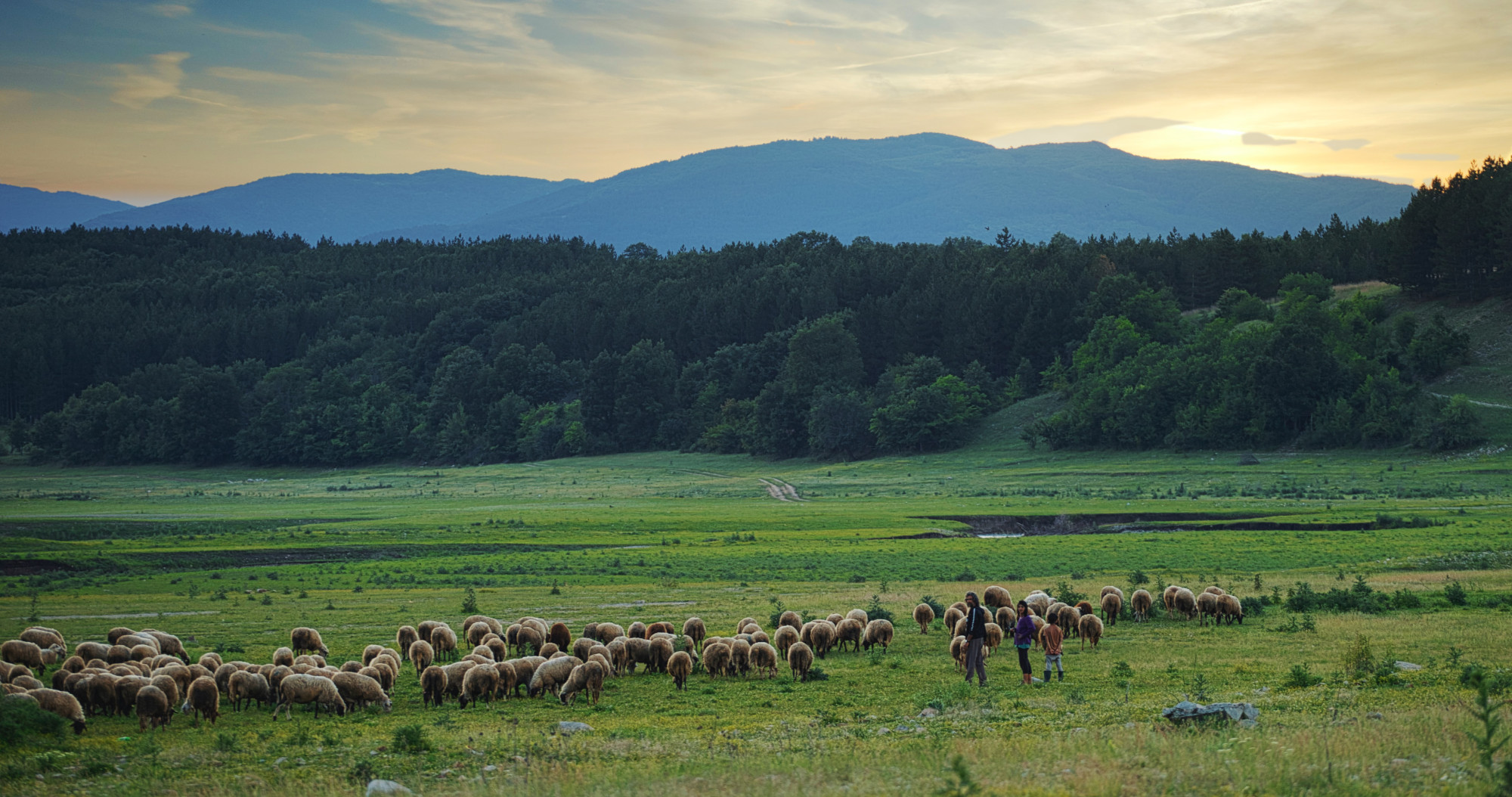Without payments from the Common Agricultural Policy, large shares of areas with natural constraints - such as mountains, or land in dry or cold territories - would be at risk of abandonment. Direct payments and investments under rural development funds help maintain farming and rural livelihood in these special areas. The analytical brief published by the European Commission also shows that farms located in areas with natural constraints are on average less intensive, with more land uses beneficial to the environment and biodiversity, such as grassland, protein crops, and fallow land.
Areas facing natural or other specific constraints (ANC) are those where farming is more difficult due to unfavourable conditions such as altitude, slope, dryness, low temperature, unfavourable texture, and stoniness. These areas may also be impacted by other factors that put them more at risk of land abandonment. Areas with natural constraints cover 59% of the EU utilised agricultural area.
Farmers conducting their activity in such a designated area can receive income support from the CAP, on top of the average annual payment per hectare, to compensate for the disadvantages brought by the existing constraints. In the period 2023-27, ANC support is provided for by 23 CAP Strategic Plans with a planned public expenditure of €18.7 billion, covering 47 million hectares. This amount represents 17% of the total public funding for rural development and 6% of the CAP total public funding. Overall, ANC payments help maintaining extensive and low-input farming systems which, though less performing in economic term, produce food and feed in more marginal areas.
This is the first time the Commission has conducted such an overview of the socio-economic and environmental features of commercial farms in ANC compared with farms outside of ANC, based on data from the EU Farm Accountancy Data Network.
From an economic point of view, farms in ANC are on average less performing, with lower income, lower economic size and receive higher subsidies per hectare compared with other farms. Despite considerable CAP support, the income gap between farms located in ANC and non-ANC remains large, amounting for 20.4% less in mountain areas and 26.5% less in ANC other than mountains. Without public support, a significant share of these farms would have to cease their activity.
From an environmental point of view, data shows that farms in ANC use less input, like mineral fertilisers and pesticides. For example, farms specialised in field crops in mountain and non-mountain ANC use respectively 55% and 26% less mineral nitrogen fertilisers compared to the same kind of farms outside ANC. Similarly, among farms specialised in permanent crops, expenditures per ha on pesticides and other crop protection products in mountain and non-mountain ANC holdings is respectively 56% and 49% lower than in non-ANC farms.
In addition to having adverse impact on the environment in case of uncontrolled use and over-use, these inputs also represent an important economic cost for farmers. There is also evidence that farms in ANC have larger shares of protein crops, grassland, and fallow land, which are land uses proven to be more beneficial for the environment and biodiversity. Protein crops improve soil fertility and reduce need for synthetic fertilisers. Fallow land and grasslands lower the risk for soil erosion, support biodiversity, improve soil biophysical properties, and contribute to the maintenance of landscapes. Likewise, crop diversification is an important agro-ecological practice with positive effects on several environmental aspects including biodiversity, pollination, pest control, nutrient cycling, soil fertility, and water regulation. In areas with natural constraints that are not mountains, crop diversification is higher than in other farms. In mountainous areas, grassland prevails.
More than sixty habitat types protected under the Habitat Directive depend on or can profit from agricultural activities and would be threatened by land abandonment, mainly grassland-based ones typically associated to mountain ANC. The analysis shows that there is a significant spatial coincidence between agricultural areas hosting such habitats and ANC areas. The cessation of agriculture in such cases would thus lead to a deterioration of their ecological status. This would not only negatively affect ecosystems but would lead to loss of valuable and recognised traditional landscapes as well as traditional tangible and intangible elements, like traditional buildings, transhumance practices, and typical mountain products such as certain types of cheese.
Allowing farms in ANC to go out of production would likely result in an overall decrease of food production in the EU and a consequent intensification in already intensely managed farmland. Therefore, CAP income support, is crucial.

Analytical Brief N°1: Areas with natural constraints
Overview and socio-economic and environmental features of farming in ANC areas based on FADN data



